There is always something very rewarding about breathing new life into older things (people included!). The Tennant collection has done just that for me as I have breathed new life into each and every battalion. This week I was able to upgrade some figures in my Highland battalions thanks to a lucky eBay find of some original Hinton Hunt Highlanders and a lovely modern casting of a Highland Colonel from Art Miniaturen in Germany.
 |
| The newly minted command stands and Lt. Colonel Robert Macara of the 42nd Highlanders (Black Watch) |
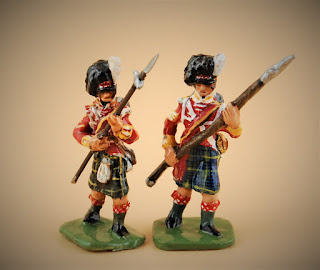 |
| Here are some comparison shots of the older Der Kriegspieler NCOs that have been replaced by Hinton Hunt originals (right). |
Now on to the French army. Below are the Colonel and Chef de Bataillon for the 69th Regiment of line infantry. The command figures are new, but the battalion is famously pictured in Bruce Quarrie's Airfix Guide to Napoleonic Wargaming published in 1974. Because these were such iconic figures, I did not want to make too many changes, and confined my efforts to refreshing some paint that had dulled or chipped over time. I did trim the bases to be more in line with the rest of the Tennant collection (The bases were not shown in the photographs of the Airfix guide, but covered in ground flocking), and modified the position of the eagle bearer just to add one little touch to the battalion to make it my own.)
 |
| Colonel Benoit-Antoine Guinand (right) and his Chef de Battailion, now promoted to Major thanks to an astute reader. |
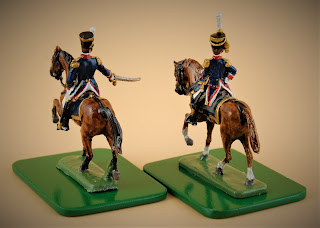 |
| Colonel Guinand on the right is another masterpiece available at Franznap. I can't say enough how beautifully sculpted that range is. |
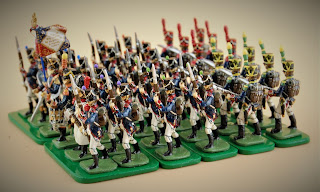 |
| Note the rank insignia on the sleeve of the lead Fusilier. Mr Tennant incorporated amazing levels of detail and accuracy into his work. |
Garage Sale!
I recently agreed to help a friend find a home for some of her father's collection of miniatures. The majority are 54mm figures from the 1960s - Rose, Stadden, Hinton Hunt and Bussler (IR) miniatures primarily. I would love help with positive IDs if someone out there recognizes the pieces. Basically I want to get a reasonable but not necessarily collector level price for these, if you see anything below that strikes your fancy, please do drop me a line at David.L.Crenshaw@Gmail.com and make an offer on what you think would be an attractive price. All proceeds will go to the daughter of the collector and I will be retaining a few pieces for myself in payment for finding these lovely miniatures a good home. One little item I will be keeping for myself is a letter written to the collector and signed by Marcus Hinton 3 days after my birth!
 |
| Britains Hollow cast One horse is missing his tail. |
 |
| Britains Hollow cast? Edit: This is a Britains French Cuirassier 1870. Broken heads were common with this line of hollow cast figures, and were repaired using a match stick to reattach the head. |
WWI
 |
| WWI National leaders with original painting instructions Edit: L-R SP-121 Tsar Nicholas II of Russia 1914, SP-109 Kaiser Willhelm II Germany 1900-14, SP-120 Franz Joseph 1914 |
British Colonial
 |
| British Colonial Indian set Edit: The figure at far left is a Stadden. The one in the bag with the yellow uniform is an Imerie-Risley figure of Skinner's Horse. |
Napoleonic
 |
| 54mm Napoleonics Edit: All three of these are probably Imerie-Risley, but not 100% sure on the two French. The figure far left is a US infantryman in 1812. |
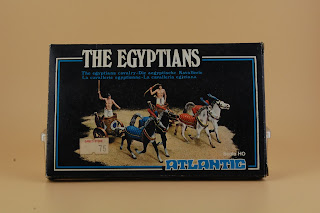 |
| I had the Greeks set as a kid. Fun to see a set in the original box! |
American Civil War
(Matthew Brady Figure SOLD!)
 |
| Grant? and soldiers set |
 | ||||
| Matthew Brady with Camera - original painting instructions included! Imerie Risley or Bussler |
I also have this amazing 54mm American Civil War artillery set with limber and horses - unpainted. This is not my auction but apparently shows the original piece fully painted. He's asking $600 Canadian for the unpainted set, but I think that may be priced a bit high.
https://www.ebay.ca/itm/265115969104?hash=item3dba24a650:g:PisAAOSwF5NgX7pq
There are a few more items as well that I have not pictured. There are a number of 54mm WWI castings, some Historex and Metal 54mm Napoleonic Hussars. There is also a rather nifty complete set of American War of Independence reproduction buttons and badges, each with its own descriptive narrative booklet. Let me know if there is anything of interest. Thanks to Roy, Tom and Terry for some help with IDs!
WWII
American War of Independence Button Set- SOLD!
American West
Mexican American War?
Ancient/Medieval

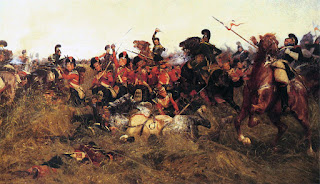
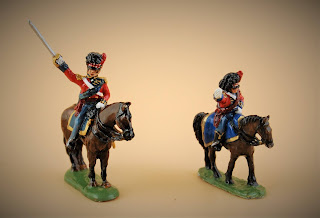



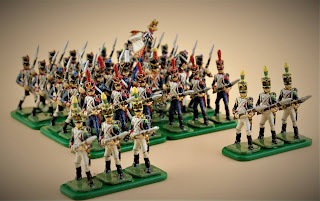
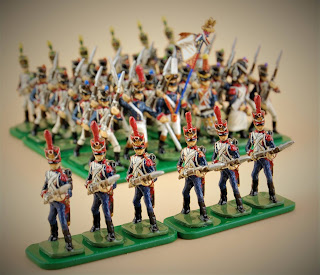
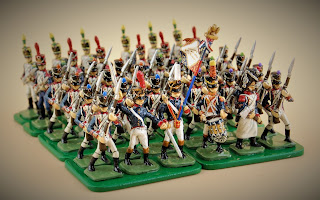

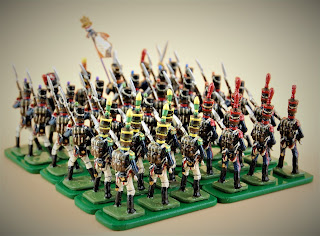


















Like the improvemenmts to the 42nd, but must point out the lancers at Q-B were French not Polish. Similarly the 69th look great - keeping them true to their their illustrious past seems appropriate - now just got to wait to see if they remember how to fight after all this time.
ReplyDeleteI don't collect 54mm but the pikemen are not ECW they are at least 1660s/70s at a guess - good luck!
Thanks Rob. I have updated the listing. I just grabbed the blurb for the description of the painting from the website, but you are absolutely correct, those are French lancers. Noted and corrected. I'm pretty sure the 69th remember how to fight!
DeleteI'm ultra impressed by your tartanry, David. I've never dared to paint a Highland Regiment, but if I ever do I'll have to interrogate you about how you do it.
ReplyDeleteLove the colonels!
Best regards
WM
WM, It's really not as bad as all that, just lay down the base colors. The Micron .003 black ink pen really helps with all of the black lines. The tricky part is the varying shades of secondary colours in the background. In this case where the blue stripes intersect and make a brighter blue square. Glad you liked the Colonels. The Franznap figure has his vest and trousers grey-lined with pencil per your suggestion.
DeleteBest,
David
ReplyDeleteVery pretty figurines and beautiful painting especially concerning the tartans.
Regardinging the French senior officers, only the colonel has two epaulettes. The battalion commander wears an epaulette on the right and a counter-epaulette on the left. The plastic figurine will be easy for you to cut the fringes and keep the shoulder tab and the turn according to the attached table.
http://centjours.mont-saint-jean.com/planche_empire.php?uniformes=GradesInf1FR.png
Huh! I learned something just now. I always assumed the Chef de Battalion was the equivalent of the British Lt. Colonel, but I see that a Major in the French army outranks the Chef de Battalion. I'll just change the shoulder straps to silver and promote him to Major. Thanks!
DeleteThis is a possibility, but unlike the British Army where a lieutenant colonel can command a battalion, the major of a French regiment is the deputy commander in the regiment.
DeleteHis mission is to train new conscripts. For this reason he is usually at the regimental depot.
If you consult the OOB you will notice that there are very few French major in the theater of operations, unlike the British lieutenant-colonel.
That is very interesting. When working on the Dutch Guard I noted some colonels were listed as Colonel en Second. Was that something unique to guard units or did some line regiments occasionally have an additional Colonel in a secondary command position?
DeleteI think I found my man! " In the reconnaissance made by the 1st division, August 28, 1811, Major Dornier with 600 men of the 69th, which he provisionally commanded, and 50 horses, was charged with pushing a reconnaissance until Arroyo-del-Puerco (near Caceres), to secure the enemy's strength. Having left 400 men behind, he advanced very far with 200 men, and encountered a column of 2,000 Spaniards whose shock he sustained with bravery and blood. admirable cold. Surrounded on all sides, he retired in order with his 200 men to his reserve, which he had ambushed, and which knocked out 80 enemy troops. The detachment of brave Major Dornier suffered no loss; the enemy withdrew in disorder "(Extract from official reports).
DeleteFrom: http://frederic.berjaud.free.fr/069edeligne/69edeligne.htm
Have to love the internet and free translation of web pages!
Regarding the Imperial Guard regiments, you are right. The commander of each regiment is a major general. His deputy is a colonel appointed deputy colonel and occupying the functions of major.
Deletehttps://www.serviceh historique.sga.defense.gouv.fr/guides-aide/les-grades-dans-larmee.
In the line infantry when the depots of several regiments formed one company. The new companies are regrouped in a provisional battalion. One of the majors takes the head of this provisional battalion and leads it to the theater of war. When it reaches it, the companies rejoin their respective regiments. During the journey it happens that the provisional battalion has to fight particularly during the Peninsula wars.
On March 23, 1809, the Emperor appointed by decree 46 deputy colonel from among the best majors to command the provisional corps. The Emperor explains that the presence of the majors at the depots of their regiment is necessary for the order of the administration and the accounting of the corps.
Congratulations on your involvement in the French language
Splendid work on the Tennant collection David…
ReplyDeleteHighlands… yes I must stop putting off painting a unit of those…
All the best. Alt
Am eager to see your take on the Highlanders Aly. No time like the present!
Delete